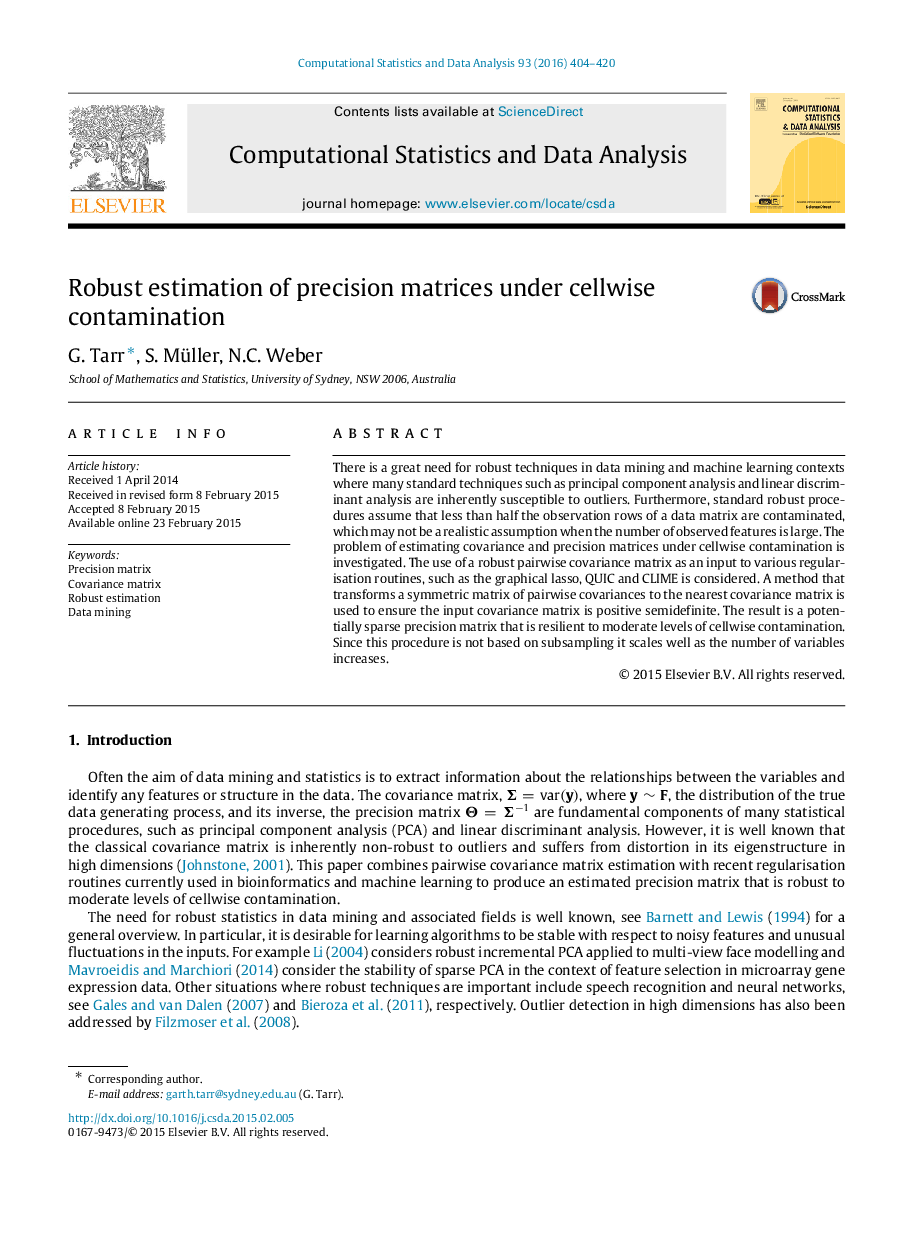| Article ID | Journal | Published Year | Pages | File Type |
|---|---|---|---|---|
| 415339 | Computational Statistics & Data Analysis | 2016 | 17 Pages |
There is a great need for robust techniques in data mining and machine learning contexts where many standard techniques such as principal component analysis and linear discriminant analysis are inherently susceptible to outliers. Furthermore, standard robust procedures assume that less than half the observation rows of a data matrix are contaminated, which may not be a realistic assumption when the number of observed features is large. The problem of estimating covariance and precision matrices under cellwise contamination is investigated. The use of a robust pairwise covariance matrix as an input to various regularisation routines, such as the graphical lasso, QUIC and CLIME is considered. A method that transforms a symmetric matrix of pairwise covariances to the nearest covariance matrix is used to ensure the input covariance matrix is positive semidefinite. The result is a potentially sparse precision matrix that is resilient to moderate levels of cellwise contamination. Since this procedure is not based on subsampling it scales well as the number of variables increases.
